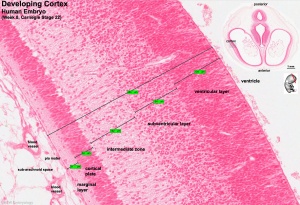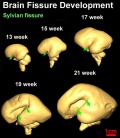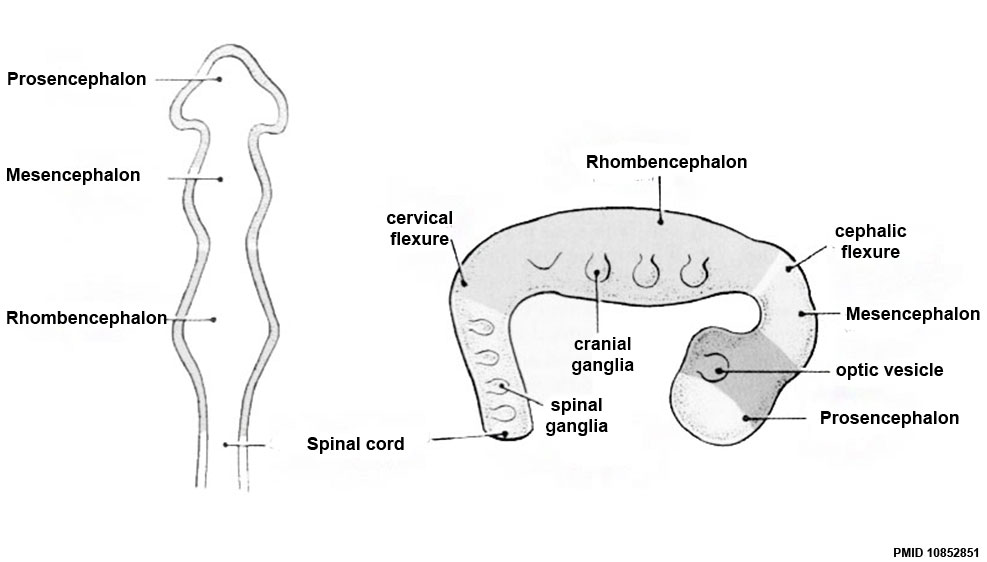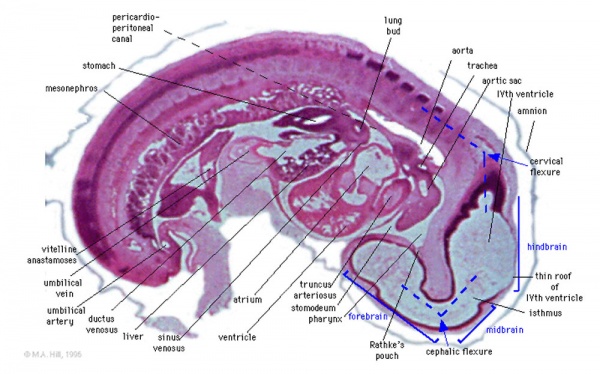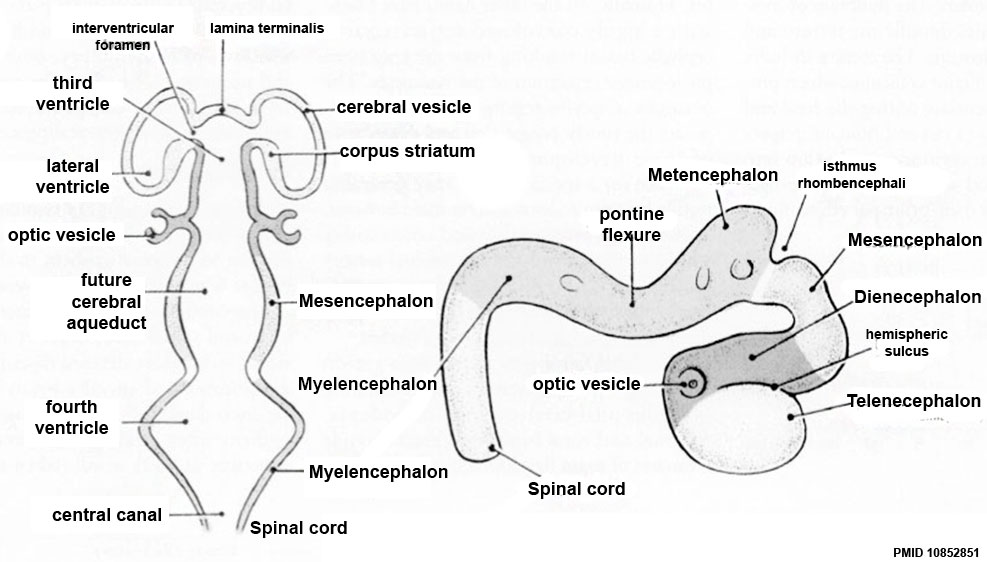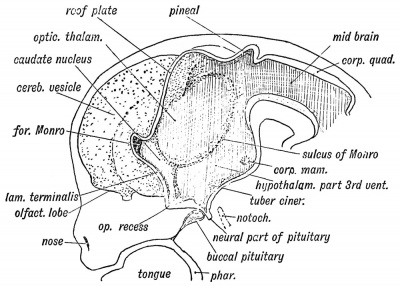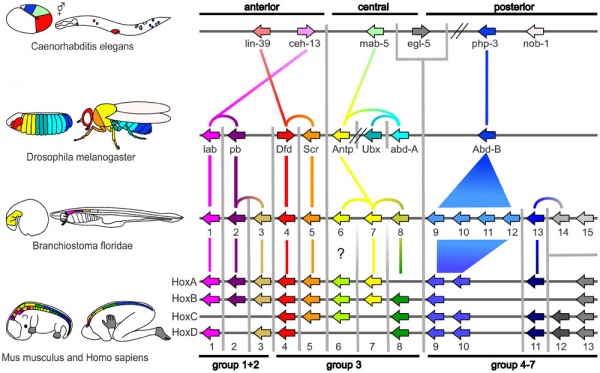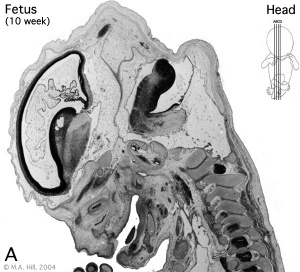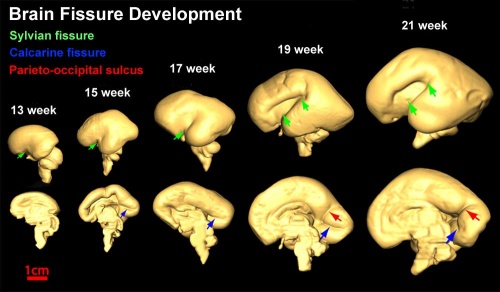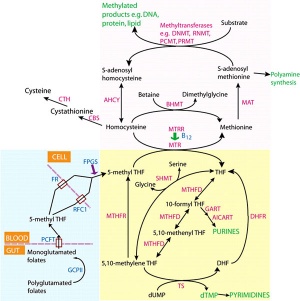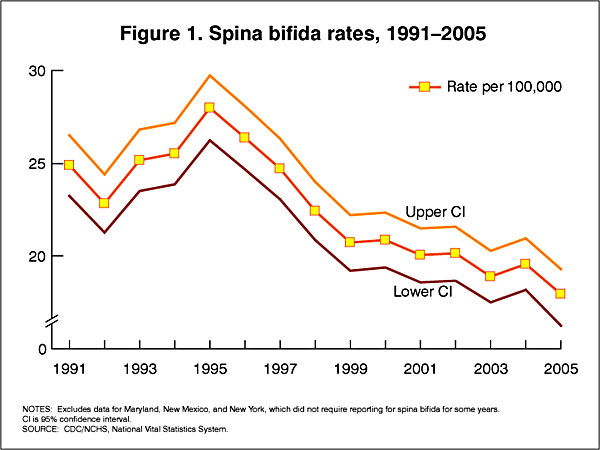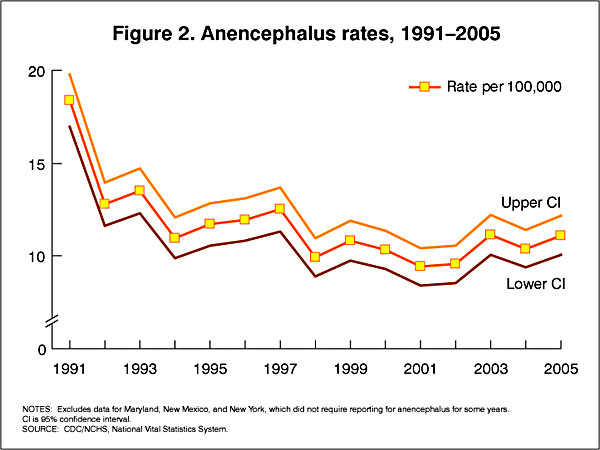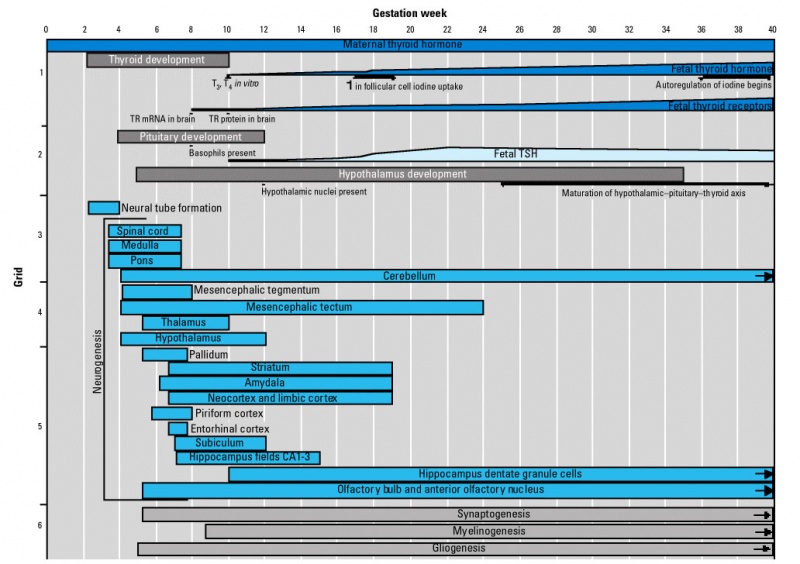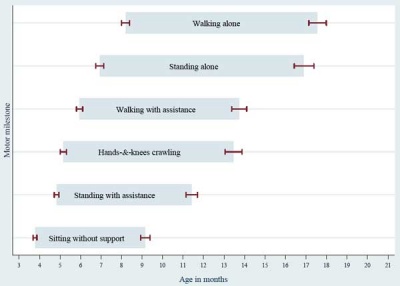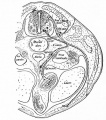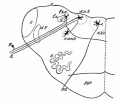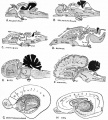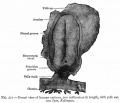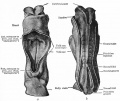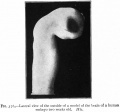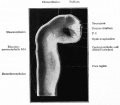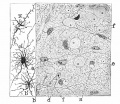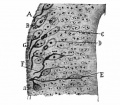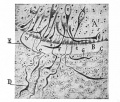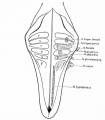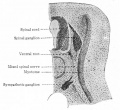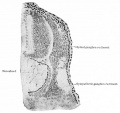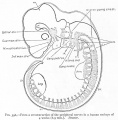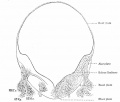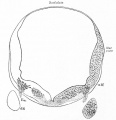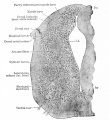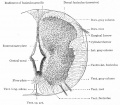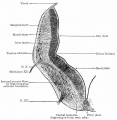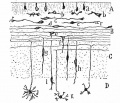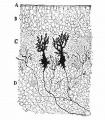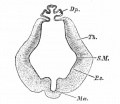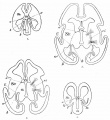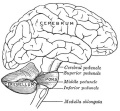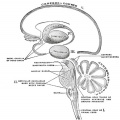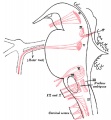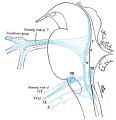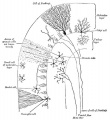Lecture - Neural Development
Introduction
- Understand early neural development.
- Understand the formation of the brain; grey and white matter from the neural tube.
- Understand the formation of spinal cord.
- Understand the role of migration of neurons during neural development.
- Detailed structure of the adult nervous system is provided in other Anatomy courses.
- History - Santiago Ramón y Cajal
Lecture Resources
| Movies | |||||||||||||||||||||||
|---|---|---|---|---|---|---|---|---|---|---|---|---|---|---|---|---|---|---|---|---|---|---|---|
|
|
|
|
|
| ||||||||||||||||||
|
|
|
|
| References | |
|---|---|
| Hill, M.A. (2020). UNSW Embryology (20th ed.) Retrieved April 27, 2024, from https://embryology.med.unsw.edu.au |
Archive: 2015 PDF2014 | 2014 Lecture 19 PDF |
| Moore, K.L., Persaud, T.V.N. & Torchia, M.G. (2011). The developing human: clinically oriented embryology (9th ed.). Philadelphia: Saunders. | The following chapter links only work with a UNSW connection. |
| Schoenwolf, G.C., Bleyl, S.B., Brauer, P.R. & Francis-West, P.H. (2009). Larsen's human embryology (4th ed.). New York; Edinburgh: Churchill Livingstone. | UNSW students have full access to this textbook edition through UNSW Library subscription (with student Zpass log-in).
|
Early Brain Structure
Primary Vesicles
- rostral neural tube forms 3 primary brain vesicles (week 4)
- 3 primary vesicles: prosencephalon (forebrain), mesencephalon (midbrain), rhombencephalon (hindbrain)
Brain Flexures
Rapid growth folds the neural tube forming 3 brain flexures
- cephalic flexure - pushes mesencephalon upwards
- cervical flexure - between brain stem and spinal cord
- pontine flexure - generates 4th ventricle
Secondary Vesicles
From the 3 primary vesicles developing to form 5 secondary vesicles
- prosencephalon- telencephalon (endbrain, forms cerebral hemispheres), diencephalon (betweenbrain, forms optic outgrowth)
- mesencephalon
- rhombencephalon- metencephalon (behindbrain), myelencephalon (medullabrain)
Carnegie stage 13 Embryo showing neural tube and brain flexures.
| Neural Tube | Primary Vesicles | Secondary Vesicles | Adult Structures |
|---|---|---|---|
| week 3 | week 4 | week 5 | adult |
| prosencephalon (forebrain) | telencephalon | Rhinencephalon, Amygdala, hippocampus, cerebrum (cortex), hypothalamus, pituitary | Basal Ganglia, lateral ventricles | |
| diencephalon | epithalamus, thalamus, Subthalamus, pineal, posterior commissure, pretectum, third ventricle | ||
| mesencephalon (midbrain) | mesencephalon | tectum, Cerebral peduncle, cerebral aqueduct, pons | |
| rhombencephalon (hindbrain) | metencephalon | cerebellum | |
| myelencephalon | medulla oblongata, isthmus | ||
| spinal cord, pyramidal decussation, central canal | |||
Historic figure showing the parts derived from the walls of the fore-brain. (After Wilhelm His (1831-1904))
Rhombomeres
- Hindbrain - Rhombomeres represent the crania-caudal segmentation of the neural tube at the level lot the hindbrain.
- Historic - Identified morphologically as identifiable regions.
- Modern - Represent the different expression levels of Hox genes and levels of neural crest migration.
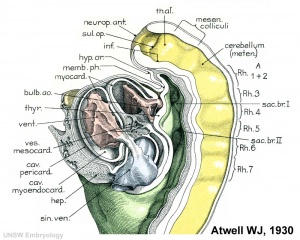
|
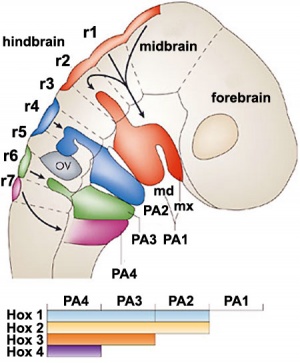
|
| Historic image of embryonic rhombomeres | Hindbrain neural crest migration |
Hox-proteins crania-caudal expression (species comparison)
Neural Layers
- Ventricular Germinal Zone (VGZ) - mitosis at the ventricular luminal surface, produces early-generated macroneurons
- Subventricular Zone (SVZ) - mitosis away from the ventricular surface, produces later-generated microneurons and glia
Brain

|

|
| Human Embryo developing head cross section (Week 8, Stage 22) | Detail of developing cortex (shown in blue box) |
- Neural progenitor cells migrate from the ventricular layer along radial glia.
- Cortex layers develops inside (first) outside (last)
- Glial progenitor cells develop later from the same ventricular stem cells.
Spinal Cord
- Similar processes to those described for brain.
- Remember notochord ventral patterning by SHH and dorsal ectoderm (dorsalisation).
- Identify the different regions within the neural tube (floor plate, basal plate, alar plate, roof plate)
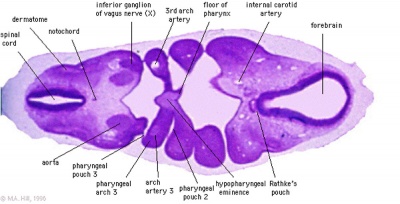
|

|
| Stage 13 | Stage 22 |
| Half of a transverse section of the spinal cord | ||
|---|---|---|
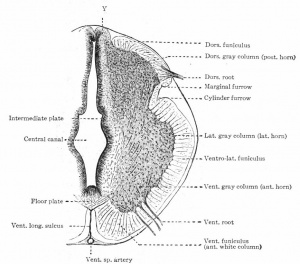
|
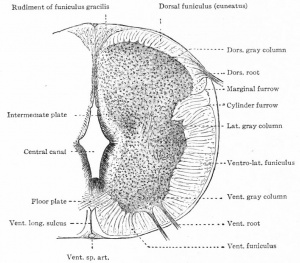
|
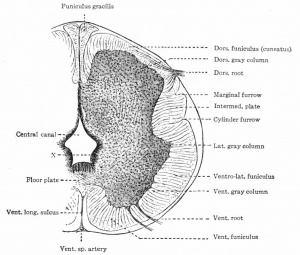
|
| Human embryo of 18.5 mm (7.5 weeks). | Human embryo of 24 mm (8.5 weeks). | Human fetus of about 3 months. |
| Wilhelm His (1831-1904) |
Ventricular Development
- The ventricular system develops from the single cavity formed from the hollow neural tube.
- This fluid-filled space is separated from the amnion following fusion of the neural tube and closure of neuropores.
- At different regions sites within the wall (floor of lateral ventricle and roof of the third and fourth ventricles) differentiate to form choroid plexus a modified vascular structure which will produce Cerebrospinal fluid (CSF)
- choroid plexus is a modified vascular structure which will produce Cerebrospinal fluid (CSF)
(FYI - you do not need to know detailed stage development)
| Human Ventricular Development Timeline |
|---|
Data from O'Rahilly R, Müller F., 1990[1] |
Cranial Nerves
Historic diagram showing the relationship of the Cranial Nerves to the Primitive Segments of the Head.
Fetal Neural
Timeline of events in Human Neural Development

|
During the fetal period there is ongoing growth in size, weight and surface area of the brain and spinal cord. Microscopically there is ongoing: cell migration, extension of processes, cell death and glial cell development.
Cortical maturation (sulcation and gyration) and vascularization of the lateral surface of the brain starts with the insular cortex (insula, insulary cortex or insular lobe) region during the fetal period. This cerebral cortex region in the adult brain lies deep within the lateral sulcus between the temporal lobe and the parietal lobe.
Insular Gyral and Sulcal Development
(Data from[2])
(Text - modified from [3])
|
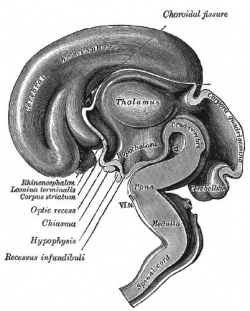
|
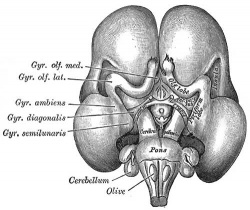
|
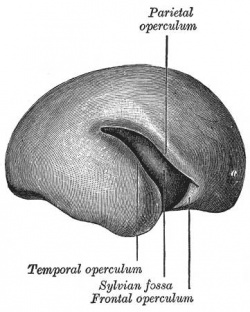
|
| Human brain at three months (median sagittal section) | Human brain at four months (inferior surface) | Human brain at five months (outer surface) |
Folate and Neural Development
Research over the last 20 years had suggested a relationship between maternal diet and the birth of an affected infant. Recent evidence has confirmed that folic acid, a water soluble vitamin (vitamin B9) found in many fruits (particularly oranges, berries and bananas), leafy green vegetables, cereals and legumes, may prevent the majority of neural tube defects.
Required for DNA metabolism in rapidly dividing cells.
USA Statistics
In the U.S.A. the Food and Drug Administration in 1996 authorized that all enriched cereal grain products be fortified with folic acid, with optional fortification beginning in March 1996 and mandatory fortification in January 1998. The data below shows the subsequent changes in anencephaly and spina bifida rate over that period.
Thyroid System and Neural Development
Timeline of human thyroid system and brain development from conception to birth.[4] (Estimation of neurogenesis adapted from Bayer et al.[5])
Environmental Effects and Neural Development

The developmental environment can also impact upon neural growth; maternal drugs such as alcohol and heavy metals such as lead (mining, historically both petrol and paint).
Postnatal
Postnatal environment, diet and other sensory abnormalities (hearing) can also impact on achieving developmental milestones.
WHO motor development milestones
References
Historic Embryology
| Historic Disclaimer - information about historic embryology pages |
|---|
| Pages where the terms "Historic" (textbooks, papers, people, recommendations) appear on this site, and sections within pages where this disclaimer appears, indicate that the content and scientific understanding are specific to the time of publication. This means that while some scientific descriptions are still accurate, the terminology and interpretation of the developmental mechanisms reflect the understanding at the time of original publication and those of the preceding periods, these terms, interpretations and recommendations may not reflect our current scientific understanding. (More? Embryology History | Historic Embryology Papers) |
- Chapter XV. The Brain and Spinal Cord Human Embryology and Morphology. Keith, A. (1902) London: Edward Arnold.
- Contributions to Embryology Carnegie Institution No.59 Relative Weight and Volume of the Component Parts of the Brain of the Human Embryo at Different Stages of Development. Jenkins, G.B. (1921). pp5-54.
Images
| Text-Book of Embryology - 1921 |
|---|
| Bailey, F.R. and Miller, A.M. (1921). Text-Book of Embryology. New York: William Wood and Co.
|
| Anatomy of the Human Bod - 1918 |
|---|
| ANAT2341 Course Timetable | |||
|---|---|---|---|
| Week (Mon) | Lecture 1 (Mon 1-2pm) | Lecture 2 (Tue 3-4pm) | Practical (Fri 1-3pm) |
| Week 2 (1 Aug) | Introduction | Fertilization | Lab 1 |
| Week 3 (8 Aug) | Week 1 and 2 | Week 3 | Lab 2 |
| Week 4 (15 Aug) | Mesoderm | Ectoderm | Lab 3 |
| Week 5 (22 Aug) | Early Vascular | Placenta | Lab 4 |
| Week 6 (29 Aug) | Gastrointestinal | Respiratory | Lab 5 |
| Week 7 (5 Sep) | Head | Neural Crest | Lab 6 |
| Week 8 (12 Sep) | Musculoskeletal | Limb Development | Lab 7 |
| Week 9 (19 Sep) | Renal | Genital | Lab 8 |
| Mid-semester break | |||
| Week 10 (3 Oct) | Public Holiday | Stem Cells | Lab 9 |
| Week 11 (10 Oct) | Integumentary | Endocrine | Lab 10 |
| Week 12 (17 Oct) | Heart | Sensory | Lab 11 |
| Week 13 (24 Oct) | Fetal | Birth and Revision | Lab 12 |
|
ANAT2341 2016: Moodle page | ECHO360 | Textbooks | Students 2016 | Projects 2016 | |||
Glossary Links
- Glossary: A | B | C | D | E | F | G | H | I | J | K | L | M | N | O | P | Q | R | S | T | U | V | W | X | Y | Z | Numbers | Symbols | Term Link
Cite this page: Hill, M.A. (2024, April 27) Embryology Lecture - Neural Development. Retrieved from https://embryology.med.unsw.edu.au/embryology/index.php/Lecture_-_Neural_Development
- © Dr Mark Hill 2024, UNSW Embryology ISBN: 978 0 7334 2609 4 - UNSW CRICOS Provider Code No. 00098G
